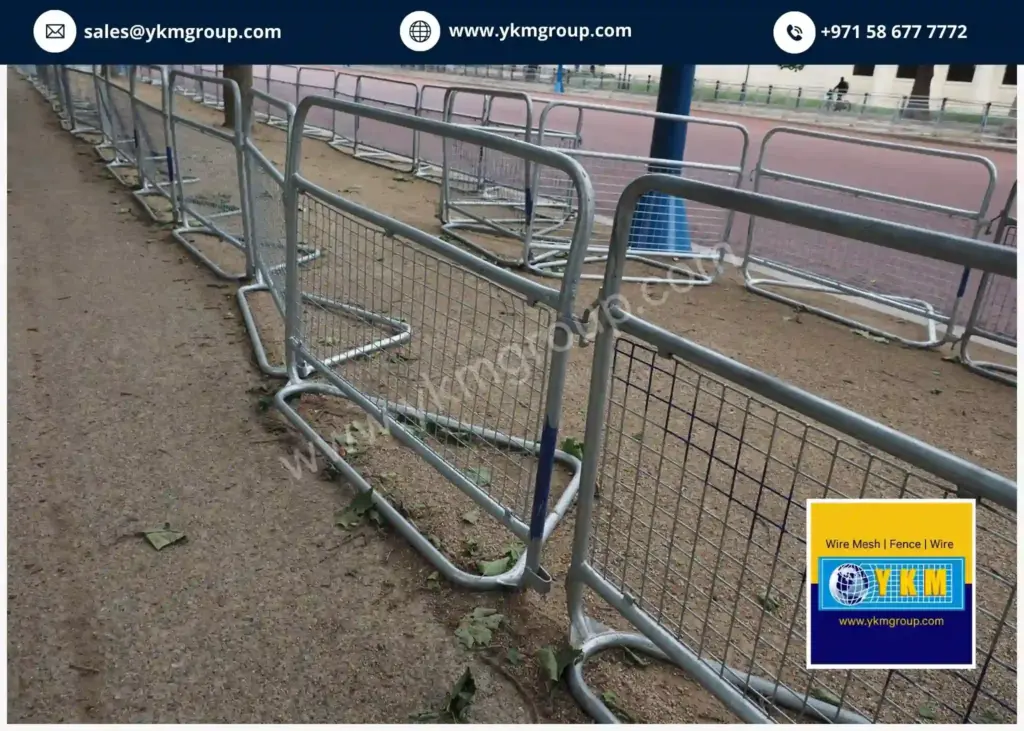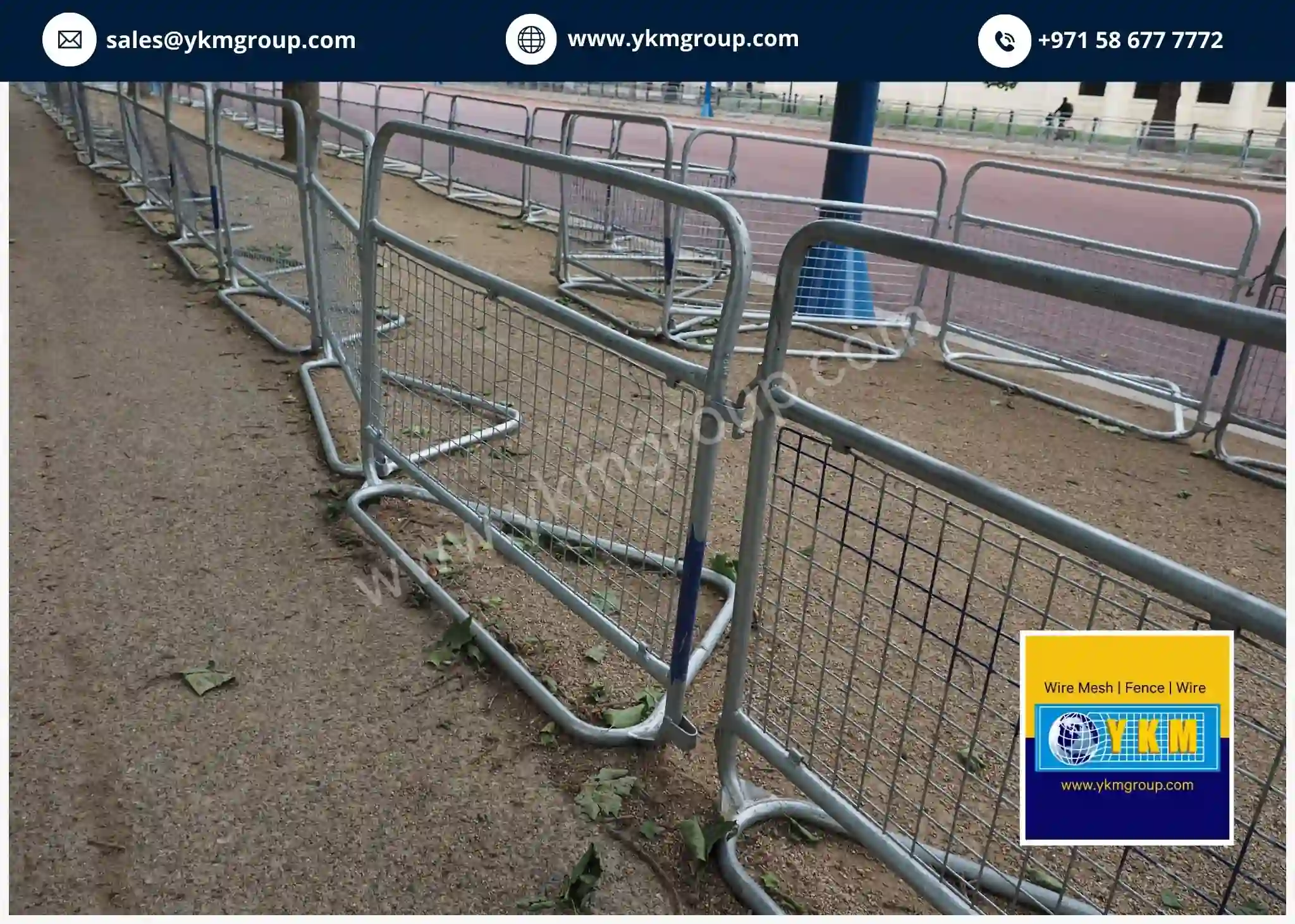
Navigating Site Security: A Comprehensive Guide to Types of Temporary Construction Fencing
In the dynamic world of construction, ensuring site security is paramount. One of the most effective and widely used methods for achieving this is through the deployment of types of temporary construction fencing. These fences serve as a crucial barrier, protecting the public, preventing unauthorized access, and safeguarding valuable equipment and materials. Understanding the different types of temporary construction fencing available is essential for project managers, site supervisors, and anyone involved in construction or event management. This guide will delve into the various options, their applications, and key considerations for selection.
Why Temporary Construction Fencing Matters
Before exploring the different types of temporary construction fencing, it’s important to understand why they are so important. Construction sites present numerous hazards, including heavy machinery, open excavations, and falling debris. A robust fencing solution mitigates these risks by:
- Enhancing Safety: Keeping unauthorized personnel away from dangerous areas.
- Preventing Theft and Vandalism: Deterring criminals from targeting valuable equipment and materials.
- Controlling Access: Regulating who enters and exits the site.
- Meeting Regulatory Requirements: Many jurisdictions mandate fencing for construction sites.
- Improving Site Aesthetics: Providing a more professional and organized appearance.
Common Types of Temporary Construction Fencing
Several types of temporary construction fencing cater to different needs and site conditions. Here’s a breakdown of the most common options:
Chain Link Fencing
Chain link fencing is arguably the most popular and versatile type of temporary construction fencing. It consists of woven steel wire formed into a diamond pattern, offering excellent strength and visibility.
Advantages:
- Durability: Can withstand harsh weather conditions and resist damage.
- Cost-Effectiveness: Generally less expensive than other fencing options.
- Easy Installation: Relatively quick and simple to install and dismantle.
- Visibility: Allows for clear observation of the site from outside.
- Versatility: Suitable for a wide range of applications.
Disadvantages:
- Aesthetics: Not the most visually appealing option.
- Security: Can be climbed or cut with the right tools.
Panel Fencing (Portable Fencing)
Panel fencing, also known as portable fencing, comprises individual panels connected to create a continuous barrier. These panels are typically made of steel mesh or chain link and are supported by weighted bases.
Advantages:
- Portability: Easy to move and reconfigure as needed.
- Quick Installation: Can be set up and taken down very quickly.
- Flexibility: Adaptable to various site layouts and terrain.
- No Ground Penetration: Doesn’t require digging or concrete footings.
Disadvantages:
- Stability: Can be less stable than permanent fencing, especially in windy conditions.
- Security: May be easier to bypass compared to more robust options.
- Cost: Generally more expensive than chain link fencing.
Mesh Fencing
Mesh fencing is a lightweight and economical type of temporary construction fencing. It typically consists of a plastic or fabric mesh attached to metal posts.
Advantages:
- Cost-Effective: One of the least expensive fencing options.
- Lightweight: Easy to transport and install.
- Visibility: Allows for good visibility of the site.
Disadvantages:
- Durability: Not as durable as other fencing types and prone to damage.
- Security: Offers minimal security and is easily bypassed.
- Aesthetics: Not very visually appealing.
Barricade Fencing
Barricade fencing, often made of plastic or metal, is used to delineate boundaries and control pedestrian traffic. This type of temporary construction fencing is frequently seen at events and smaller construction sites.
Advantages:
- Portability: Lightweight and easy to move.
- Visibility: Available in bright colors for high visibility.
- Easy to Install: Simple to set up and dismantle.
Disadvantages:
- Durability: Not very durable and easily damaged.
- Security: Offers minimal security.
- Stability: Can be easily knocked over.
Wooden Fencing
While less common than other options, wooden fencing can be used as a type of temporary construction fencing, particularly when a more aesthetically pleasing solution is desired or when privacy is a concern.
Advantages:
- Aesthetics: Can provide a more attractive appearance than other fencing types.
- Privacy: Can offer greater privacy for the site.
- Durability: Can be relatively durable if properly constructed.
Disadvantages:
- Cost: Generally more expensive than other options.
- Installation: More time-consuming to install and dismantle.
- Maintenance: May require painting or staining to maintain its appearance.
Factors to Consider When Choosing Temporary Construction Fencing
Selecting the right type of temporary construction fencing involves careful consideration of several factors:
- Site Security Needs: Assess the level of security required based on the project’s location, the value of equipment and materials, and the potential for vandalism or theft.
- Budget: Determine the budget for fencing and choose an option that provides the best value for the money.
- Site Conditions: Consider the terrain, weather conditions, and any potential hazards that could affect the fencing.
- Regulations: Check local regulations and codes to ensure compliance.
- Aesthetics: If appearance is a concern, choose a fencing option that complements the surrounding environment.
- Duration of Project: For long-term projects, a more durable and secure fencing option may be necessary.
Installation and Maintenance Tips
Proper installation and maintenance are crucial for ensuring the effectiveness of types of temporary construction fencing. Here are some key tips:
- Follow Manufacturer’s Instructions: Adhere to the manufacturer’s guidelines for installation to ensure proper setup and stability.
- Secure Posts and Anchors: Ensure that posts are securely anchored to the ground to prevent the fence from being easily toppled.
- Regular Inspections: Conduct regular inspections to identify any damage or weaknesses in the fencing.
- Prompt Repairs: Repair any damage promptly to maintain the fence’s integrity.
- Proper Storage: When not in use, store the fencing in a safe and secure location to prevent damage or theft.
Enhancing Security with Additional Measures
While types of temporary construction fencing provide a vital layer of security, they can be further enhanced with additional measures:
- Security Cameras: Install security cameras to monitor the site and deter criminal activity.
- Lighting: Provide adequate lighting to illuminate the site at night.
- Security Personnel: Hire security personnel to patrol the site and respond to any incidents.
- Access Control Systems: Implement access control systems to regulate who enters and exits the site.
- Signage: Post clear and visible signage warning against trespassing and theft.
The Future of Temporary Construction Fencing
The field of types of temporary construction fencing continues to evolve, with advancements in materials, designs, and technologies. Expect to see more innovative and sustainable fencing solutions in the future, including:
- Smart Fencing: Fences equipped with sensors and alarms that detect breaches and alert security personnel.
- Eco-Friendly Materials: Fences made from recycled or sustainable materials.
- Modular Designs: Fences that can be easily customized and adapted to different site requirements.
- Improved Security Features: Fences with enhanced anti-climb and anti-cut features.
Choosing the right types of temporary construction fencing is a critical aspect of site security. By understanding the various options available and considering the specific needs of the project, construction professionals can create a safe and secure environment for workers, the public, and valuable assets. From chain link to mesh and beyond, the right fencing solution makes all the difference. Remember to factor in budget, site conditions, and regulatory needs when making your selection. Don’t underestimate the power of good fencing – it’s an investment in safety, security, and peace of mind. [See also: Construction Site Security Best Practices] [See also: Temporary Fence Installation Guide]

